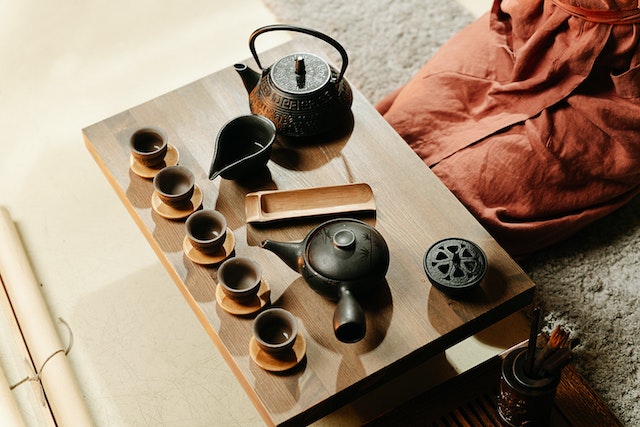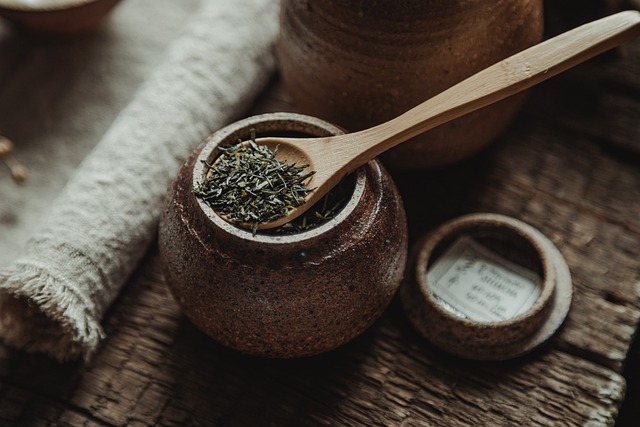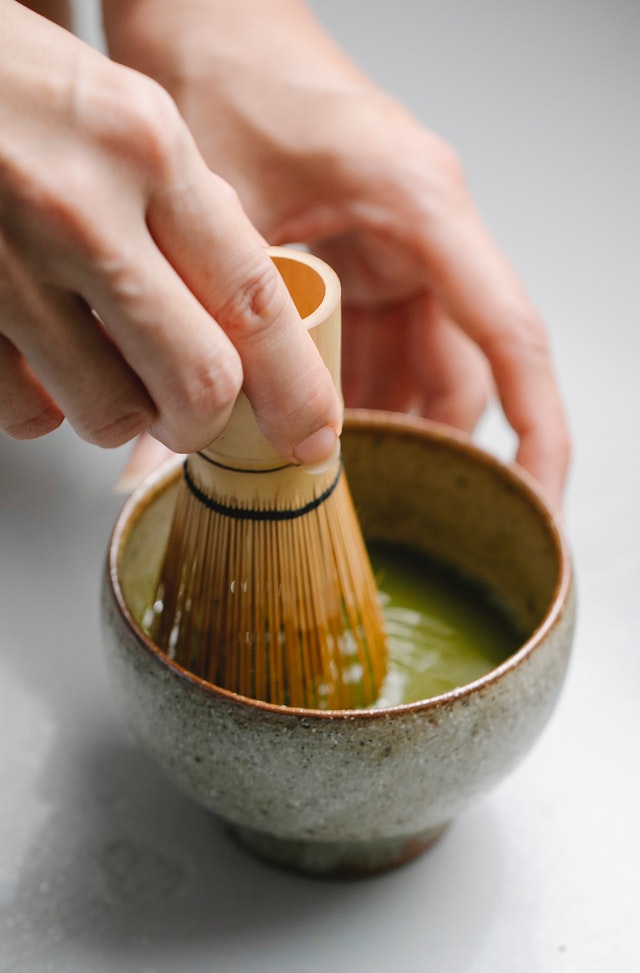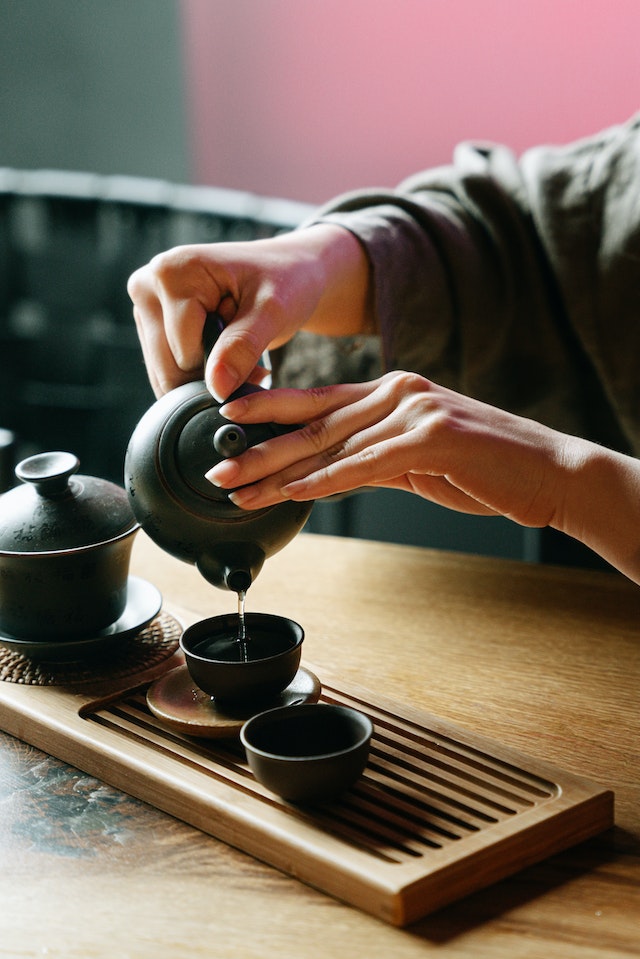
For centuries, the Japanese tea ceremony, also known as chanoyu, has been an integral aspect of traditional Japanese culture. Its history can be traced back to the 9th century when Japanese monks went to China to study Zen Buddhism and were introduced to the tea plant and its consumption.
The tea ceremony is a highly ritualized practice that emphasizes purity, respect, and tranquility. It is a way to escape the chaos of the outside world and find inner peace. Today, the Japanese tea ceremony remains a popular practice in Japan and around the world, with many individuals studying its history and principles in order to gain a greater appreciation for its culture and traditions.
Key Elements of Japanese Tea Ceremonies
The Japanese tea ceremony is an art form that encompasses various elements, each carefully chosen and incorporated to create a harmonious and meditative experience. From the preparation of the tea to the design of the tea room, every aspect of the ceremony is thoughtfully considered. Here are some key elements that make the Japanese tea ceremony truly unique:
Tea Utensils:
The tea utensils used in a Japanese tea ceremony are not just tools; they are revered objects of art. From the handmade tea bowls (chawan) to the bamboo tea scoops (chashaku) and the silk cloths (chakin) used to wipe the utensils, each item has its own significance and aesthetic value. The texture, color, and shape of these utensils are carefully chosen to enhance the tea ceremony experience.
Tea Preparation:
The preparation of tea in a Japanese tea ceremony involves precise and deliberate movements. The tea is carefully measured and whisked with a bamboo whisk (chasen) in a bowl until a frothy consistency is achieved. This process requires focus and attention to detail, emphasizing mindfulness and being in the present moment.
Tea Room Design:
The design and architecture of a Japanese tea room or tea house play a crucial role in creating the ambiance for a tea ceremony. The tea room is often small and intimate, with simple and minimalistic decor. Natural elements, such as wood and stone, are incorporated to create a sense of tranquility. The layout of the tea room is also carefully planned to ensure that guests can fully appreciate the beauty of the tea utensils and the serene atmosphere.
Guest Etiquette:
Guests attending a Japanese tea ceremony are expected to follow certain protocols and etiquette. This includes proper bowing, hand gestures, and sitting positions. Guests are encouraged to show respect and gratitude to the host, as well as to the tea and the tea utensils. Silence is valued during the ceremony to allow for contemplation and appreciation of the moment.
Philosophy of Wabi-Sabi:

Wabi-sabi, a Japanese aesthetic concept, is deeply ingrained in the philosophy behind the tea ceremony. It embraces simplicity, imperfection, and the beauty in the transient nature of things. The tea ceremony encourages participants to find beauty in the rustic and the natural, reminding us to appreciate the beauty in everyday simplicity.
Steps of a Traditional Japanese Tea Ceremony
A traditional Japanese tea ceremony is a meticulously orchestrated affair, where every step is performed with precision and grace. Each movement holds symbolism, and the ceremony unfolds in a series of carefully choreographed steps. Here are the key steps involved in a traditional Japanese tea ceremony:
Cleansing:
The tea ceremony begins with the purification of both the tea room and the utensils. The host cleanses the tea bowls, tea scoops, and other utensils with fresh water in a symbolic act of removing impurities and preparing a clean space for the ceremony.
Preparing the Tea:
The host starts by measuring the tea leaves, usually a powdered green tea called matcha, and placing them into the tea bowl. Then, they pour hot water into the tea bowl and whisk gently with a bamboo whisk, creating a frothy and vibrant green tea. This step requires skill and precision to achieve the desired consistency.
Presenting the Tea:
The host presents the tea bowl to the guest, holding it with both hands as a gesture of respect. The guest accepts the tea bowl and turns clockwise to admire its design. Before taking a sip, the guest expresses gratitude for the tea by saying “Ochitsuki” or “Itadakimasu” (I humbly receive).
Sipping the Tea:
With the tea bowl in hand, the guest takes small sips while appreciating the aroma and flavor of the tea. It is customary to slurp the tea audibly, as this signifies enjoyment and appreciation. The tea should be consumed in a slow and mindful manner, savoring each sip.

Cleaning the Utensils:
After finishing the tea, the guest uses a silk cloth to wipe the rim of the tea bowl, and then passes it back to the host. The host then proceeds to clean the tea bowl, whisk, and other utensils with water in preparation for the next guest.
Expressing Gratitude:
To conclude the ceremony, guests express their gratitude to the host for the experience. This typically involves a bow, along with words of appreciation for the tea and the host’s efforts in creating a memorable ceremony.
Tea Varieties and Tea Ceremony Styles
Introduction: Japanese tea ceremonies are not limited to a single type of tea. In fact, many different varieties of tea can be enjoyed and appreciated during these ceremonies. Additionally, there are various styles and approaches to the tea ceremony, each with its own unique characteristics. Here are some of the popular tea varieties and tea ceremony styles that you might encounter:
Tea Varieties:
Matcha: Matcha is a finely ground powdered green tea that is commonly used in Japanese tea ceremonies. It is made from shade-grown tea leaves, which are then stone-ground to produce a vibrant green powder. Matcha has a rich umami flavor and is known for its health benefits.
Sencha: Sencha is a type of Japanese green tea that is made from the young leaves of the tea plant. It is the most widely consumed tea in Japan and has a refreshing and grassy taste. Sencha is often served in casual tea ceremonies or enjoyed in everyday life.
Gyokuro: Gyokuro is a high-quality shade-grown green tea that is more expensive than other varieties. The tea leaves are covered for several weeks before harvest to enhance their flavor and aroma. Gyokuro has a mellow and sweet taste, with hints of seaweed and grass.
Hojicha: Hojicha is a roasted green tea that has a distinctive reddish-brown color and a toasty flavor. It is made by roasting the leaves at a high temperature, which gives the tea a warm and nutty taste. Hojicha is often served during colder months or after a meal.
Tea Ceremony Styles:
Omotesenke: Omotesenke is one of the most widely recognized styles of Japanese tea ceremony. It emphasizes simplicity and natural beauty, with a focus on creating a harmonious space for the guests to enjoy the tea. Omotesenke tea ceremonies often incorporate seasonal elements and decorations.
Urasenke: Urasenke is another prominent school of Japanese tea ceremony. It places a greater emphasis on aesthetics and elegance, with a focus on creating a refined and serene atmosphere. Urasenke tea ceremonies often feature intricate tea utensils and elaborate tea room designs.
Mushanokojisenke: Mushanokojisenke is a school of tea ceremony that values the integration of art, culture, and philosophy. It seeks to create a sense of harmony and balance through the tea ceremony experience. Mushanokojisenke ceremonies often incorporate calligraphy, flower arrangements, and other artistic elements.
Sado: Sado, also known as the “way of tea,” is a comprehensive approach to the tea ceremony that encompasses not only the preparation and consumption of tea but also the philosophy and principles behind it. Sado focuses on mindfulness, respect, and tranquility, and seeks to cultivate a sense of inner peace.
Cultural Significance of Japanese Tea Ceremonies
Japanese tea ceremonies hold immense cultural significance within Japanese society. They serve as a platform for the transmission of customs, values, and aesthetic principles. These ceremonies are not just about drinking tea; they are a way to connect with oneself, others, and the natural world. The reverence and mindfulness expressed during these ceremonies reflect the deep-rooted appreciation for tradition and the pursuit of harmony in Japanese culture.
- Ritualization of Everyday Life:
Japanese tea ceremonies elevate the ordinary act of drinking tea into an extraordinary ritual. By meticulously following the predetermined steps and adhering to etiquette, participants imbue the act with deeper meaning and intention. This ritualization of everyday life is a way to enhance mindfulness and bring a sense of grace and intention into even the most mundane actions.
- Fostering Social Bonds:
Tea ceremonies provide an avenue for social interaction, strengthening the bonds between participants. The host creates an inclusive and welcoming environment, inviting guests to connect with one another through tea. The shared experience of the ceremony builds a sense of community and fosters a deeper understanding and appreciation of one another.
- Nurturing Spiritual Growth:
Japanese tea ceremonies have deep spiritual roots, with influences from Zen Buddhism and Taoism. Through the practice of tea, participants are encouraged to cultivate qualities such as mindfulness, gratitude, and inner peace. The tea ceremony becomes a meditative experience, allowing individuals to transcend the complexities of daily life and find solace in the simplicity of the present moment.

- Fostering Social Bonds:
Tea ceremonies provide an avenue for social interaction, strengthening the bonds between participants. The host creates an inclusive and welcoming environment, inviting guests to connect with one another through tea. The shared experience of the ceremony builds a sense of community and fosters a deeper understanding and appreciation of one another.
- Nurturing Spiritual Growth:
Japanese tea ceremonies have deep spiritual roots, with influences from Zen Buddhism and Taoism. Through the practice of tea, participants are encouraged to cultivate qualities such as mindfulness, gratitude, and inner peace. The tea ceremony becomes a meditative experience, allowing individuals to transcend the complexities of daily life and find solace in the simplicity of the present moment.
- Preservation of Tradition:
The Japanese tea ceremony serves as a vessel for preserving and passing down cultural traditions from one generation to the next. Participants learn the intricate rituals, precise movements, and proper etiquette, ensuring the continuity of these practices. By participating in tea ceremonies, individuals actively engage with their cultural heritage, keeping these timeless traditions alive.
Japanese tea ceremonies are not merely about the act of drinking tea; they are a holistic experience that encapsulates centuries of tradition, philosophy, and artistic expression. Through the careful preparation of the tea, the reverence for nature, and the cultivation of mindfulness, participants immerse themselves in a world that transcends time and space. Japanese tea ceremonies offer a profound connection to Japanese culture, inviting individuals to slow down, appreciate the beauty in simplicity, and find harmony within themselves and the world around them.

